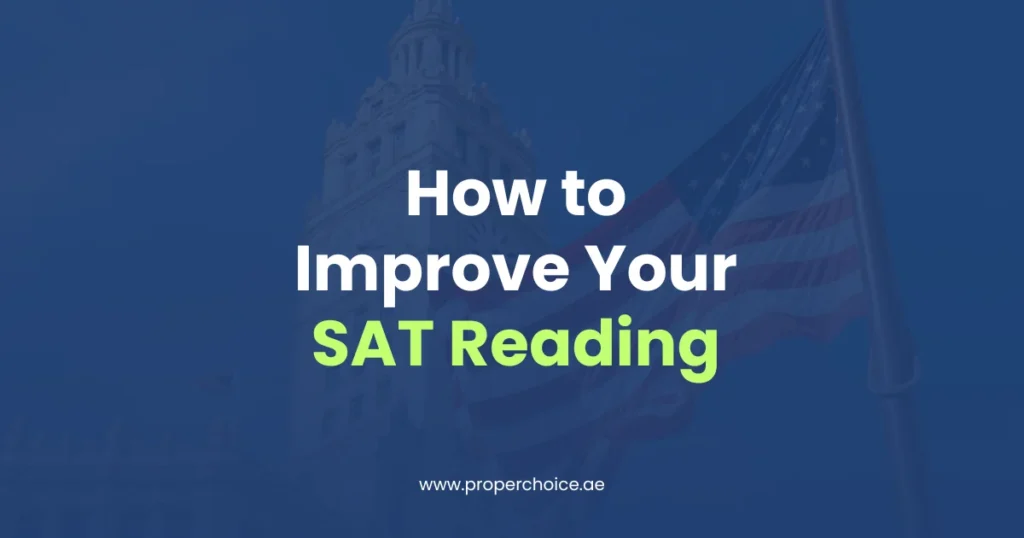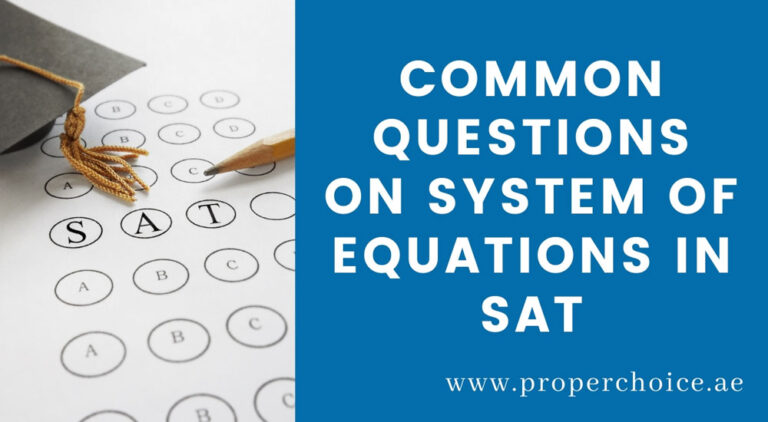How to Improve Your SAT Reading with expert tips, proven strategies, and practical techniques to boost comprehension, accuracy, and test-day confidence.
The Digital SAT Reading and writing is a part of Digital SAT Exam administered by College Board. DSAT is new version of the test features shorter passages and adaptive modules. Passages mainly drawn from literature, historical documents, social sciences, and natural sciences. Questions on reading and writing modules assesses student’s skills in context like Information and Ideas, Craft and Structure, Expression of Ideas, and Stannard English conventions. To perform better, students must do more than simply understand the words they need to grasp ideas, interpret tone, understand rhetorical strategies, and analyze data in context.
Here’s a detailed, step-by-step guide to mastering SAT Reading comprehension.
Table of Contents
Why SAT Reading is Challenging
Before diving into improvement strategies, it’s important to understand why students struggle with SAT Reading and writing:
- Time Pressure – Students has to answer two modules with 54 questions in 64 minutes. That’s barely over a minute per question.
- Dense Language – Reading and Writing modules uses historical and scientific texts can use formal or outdated language.
- Complex Questions – Many questions ask about inference, Vocabulary, punctuations, author’s view point, Transitions, and function.
- Distracting Answer Choices – SAT Reading and writing modules has each question with four options, many choices seem right but subtly distort the meaning.
The key to overcoming these challenges lies in consistent practice, strategic preparation, and developing critical thinking and analytical skills.
Step-by-Step Plan to Improve SAT Reading and Writing
Follow this Step-by-Step Plan to Improve SAT Reading and Writing with effective strategies, daily practice tips, and test-taking techniques to raise your score.
Step 1: Understand the SAT Reading and Writing Format
The SAT Reading and writing Test includes:
- The digital SAT Reading and writing section allows students to measure English language arts and content area literacy knowledge and skills more efficiently.
- The digital SAT Reading and Writing section will feature many shorter passages instead of a few long texts, meaning students will see a wide range of topics that represent the kinds of works they will read in college.
- A single question is associated with each passage (or pair of passages) require comparing viewpoints or arguments. Understanding these genres and their typical features helps predict the kind of questions that will follow.
Step 2: Develop an Active Reading Strategy
Passive reading doesn’t work for the SAT. You must read with intention.
Key techniques:
- Preview the questions first (optional): Skim the questions before reading the passage to spot key words and anticipate topics.
- Underline key ideas: Mark the main point of each paragraph. Look for topic sentences.
- Circle signal words: Look for contrast words like “however,” “although,” and “despite,” which often highlight key shifts.
- Annotate tone or attitude: Note if the author is critical, supportive, or neutral this helps with inference questions.
Step 3: Master Passage Types
Each passage type demands a different approach.
1. Literature
- Focus on character development, relationships, and tone.
- Pay attention to dialogue – it often reveals conflicts or emotional states.
- Understand narrative perspective (first person vs. third person).
2. Historical Documents
- Understand rhetorical devices (ethos, pathos, logos).
- Look for claims, support, and counterarguments.
- Analyze the author’s purpose and audience.
3. Social and Natural Sciences
- Focus on main idea and structure.
- Don’t get bogged down by technical terms understand the role of each detail in the argument.
- Interpret charts and graphs where applicable.
Step 4: Practice Question Types Strategically
Familiarity with SAT Reading and writing question types makes it easier to anticipate correct answers.
Common types:
- Main Idea – What is the author’s central claim?
- Detail – What does the passage explicitly state?
- Inference – What can be logically concluded?
- Vocabulary-in-Context – What does a word mean in this context?
- Function – Why did the author include this sentence/paragraph?
- Evidence Pairing – Match an answer with textual support.
Tip: Always go back to the passage. Many wrong answers are “almost true” or sound good out of context.
Step 5: Build Vocabulary Through Context
SAT vocabulary is tested indirectly. You’re not expected to memorize obscure words, but you need to understand:
- Nuanced meanings of common words
- How word meanings change in different contexts
Strategy:
- While reading, pause to define unknown words using context clues.
- Practice with apps like Quizlet focused on SAT vocabulary.
- Read widely: Read Newspapers, magazines, and science journals to develop reading skills.
Step 6: Time Management Skills
Time management is one of the most important factors of competitive exams. Since time is limited in the exam, you must balance accuracy with speed.
Tactics:
- Read the question first and then approach to the passage that helps you to find right information while reading a passage.
- Allocate 50–55 seconds per question.
- If stuck, flag and skip come back later with fresh eyes.
Step 7: Use Official SAT Practice
Practice from the source:
- Practice official digital SAT tests on Bluebook application provided by College Board.
- Take full-length timed reading and writing sections regularly.
- After each test, review your mistakes thoroughly.
For each mistake:
- Was it a misunderstanding of the passage?
- Did I misinterpret the question?
- Did I choose an answer that was “almost” right?
Step 8: Build Reading Endurance
A lot of students get tired or lose focus on second module of the Reading and Writing test.
Improve stamina by:
- Reading longer texts daily (20 – 30 mins)
- Timing yourself while reading and answering
- Practicing back-to-back passages in a one sitting
Step 9: Read Beyond the Test
Diversify your reading:
- Fiction: Jane Austen, Charles Dickens, Toni Morrison
- Speeches: Abraham Lincoln, Martin Luther King Jr.
- Science: Articles from Nature, Scientific American
This not only builds comprehension skills but improves comfort with difficult language and sentence structures.
Step 10: Work With a Tutor or Join a Class (If Needed)
If you’re struggling to improve on your own, consider joining a structured digital SAT course or hiring a tutor. Proper Choice Training is here to support your test preparation by providing customized study plan, reading tips, and guiding step by step throughout your preparation journey.
Proper Choice Training, Dubai helps you in:
- Identify weaknesses in reading comprehension or pacing
- Clarify question types you’re consistently missing
- Hold you accountable with weekly practice and feedback
Bonus Tips
- Eliminate extremes: Avoid answer choices with absolute words like “always,” “never,” “only” they’re usually incorrect.
- Trust the passage: Avoid inserting your own knowledge or opinion. Be specific with the passage
- Don’t overthink: If an answer seems right and is supported by the passage, pick it. Don’t talk yourself out of correct choices.
Final Thoughts
Improving SAT Reading and writing is not about shortcuts it’s about habits and developing reading tips with focused effort over time, you can significantly increase your reading score.
Here’s a recap of the core strategy:
- Know the format.
- Read actively with purpose.
- Understand passage types and tailor your reading accordingly.
- Master the question types.
- Practice vocabulary in context.
- Manage your time smartly.
- Practice using real SAT materials.
- Build your reading stamina.
- Broaden your reading material beyond SAT.
- Seek guidance if needed.
Consistency is the most important ingredient. Stick with your reading strategy for at least 6 – 8 weeks, and you’ll see a dramatic improvement in both your comprehension and your confidence.



